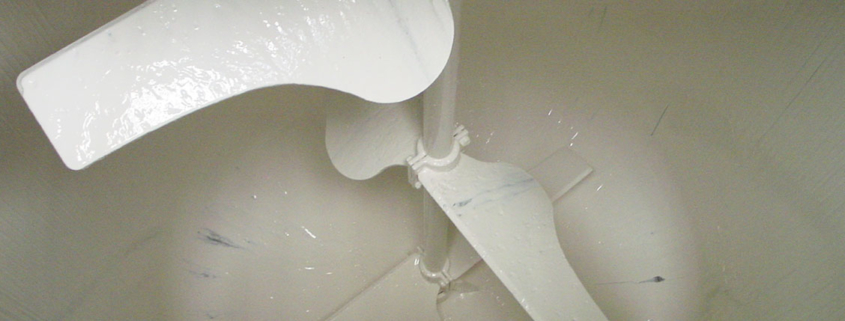The paint finishing stage in the manufacturing process
The paint finishing stage in the manufacturing process is, together with the dyeing stage, part of the final mixing phase. Both are performed just before filling.
Following the dispersion and grinding phase, discussed in a previous article, a product finishing or completion stage is required. Mixing systems are used in this new stage, by means of mixing turbines, to obtain a turbulent motion of the product. The end goal of the paint finishing stage is to achieve a homogeneous mixture from several liquids, and thus create a product that complies with the established properties that should characterise the final product.
At Oliver + Batlle, we provide mixing equipment capable of combining both the dispersion and finishing stages of paints and related products. We also have highly efficient finishing tanks recommended for mixing, dilution, addition of liquids, tinting, and completion of products without the incorporation of solids.
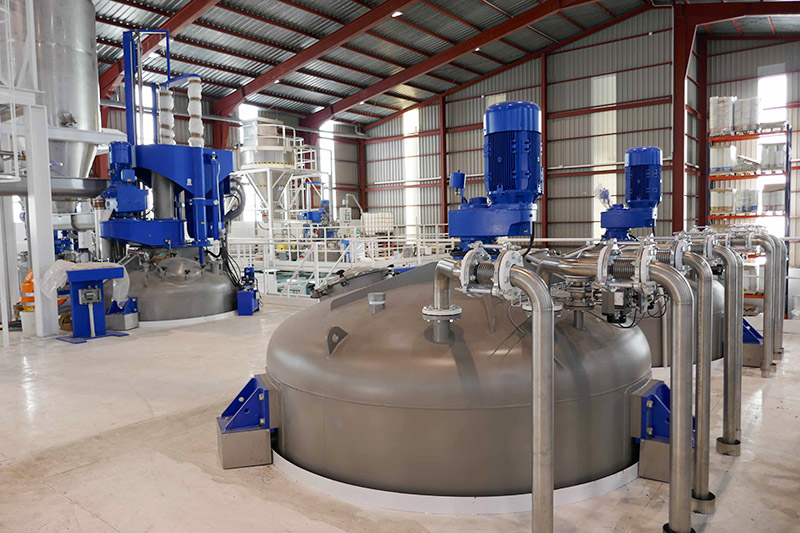
The mixing performed at the end of the manufacturing process includes several stages such as:
- product finishing: mixing of the dispersed product with liquid end components by means of stirring;
- dyeing: mixing of the finished product with dyes or colouring pastes;
- storage: mixing of the finished product to keep it in suspension before filling.
What should be taken into account when choosing a mixer for the paint finishing stage?
When selecting the mixer model that is best suited to a particular manufacturing process, several parameters must be taken into account. These include the established manufacturing process, the volume of product being manufactured, its viscosity, and its rheology or thixotropy. This last concept includes the characteristic plasticity, elasticity, and minimum viscosity the final product must have.
Taking these parameters into account, the type of turbine, shaft speed and motor power can be defined in order to select the paint mixer that best optimises the process and perfectly matches the needs and requirements.
As for the finishing tank, it is crucial for the tank construction to be very sturdy while allowing for easy integration into an automated manufacturing system.
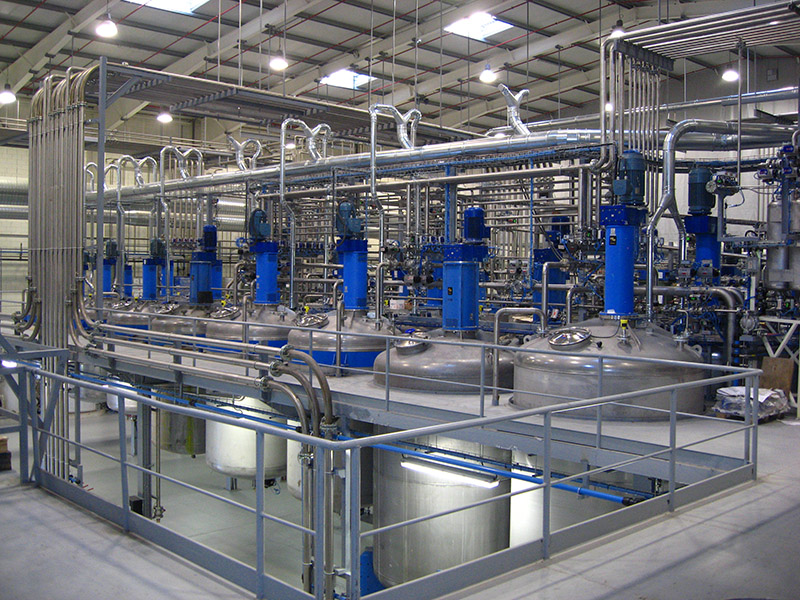
What type of turbines can be used in the paint and related product finishing process?
As previously mentioned, Oliver + Batlle‘s industrial agitators perform both dispersion and mixing processes for paints and related products. As highlighted in the article on dispersion, this equipment has a series of elements in common, such as: the transmission geared motor, the shaft with its turbine, the shaft with the blade, and the frequency converter.
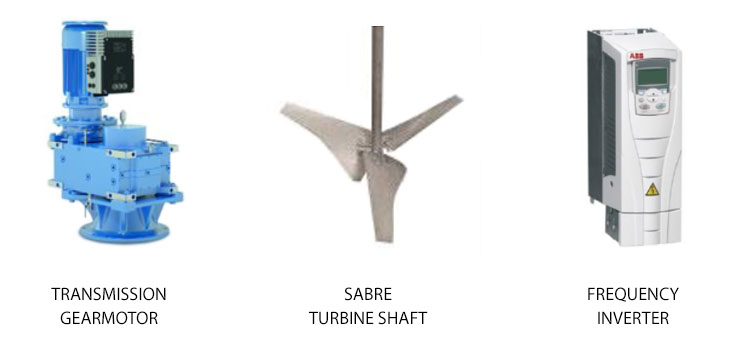
During the mixing process, it is also important to take into account the type of shaft blade that best suits the end product’s characteristics.
Different types of turbines can be used, depending on the product’s final viscosity. Each type also requires a specific speed in order to achieve an optimal mixing process.
Different types of turbines for paint finishing machinery, their characteristics and the most common applications shall be dealt with next.
Sabre type turbine
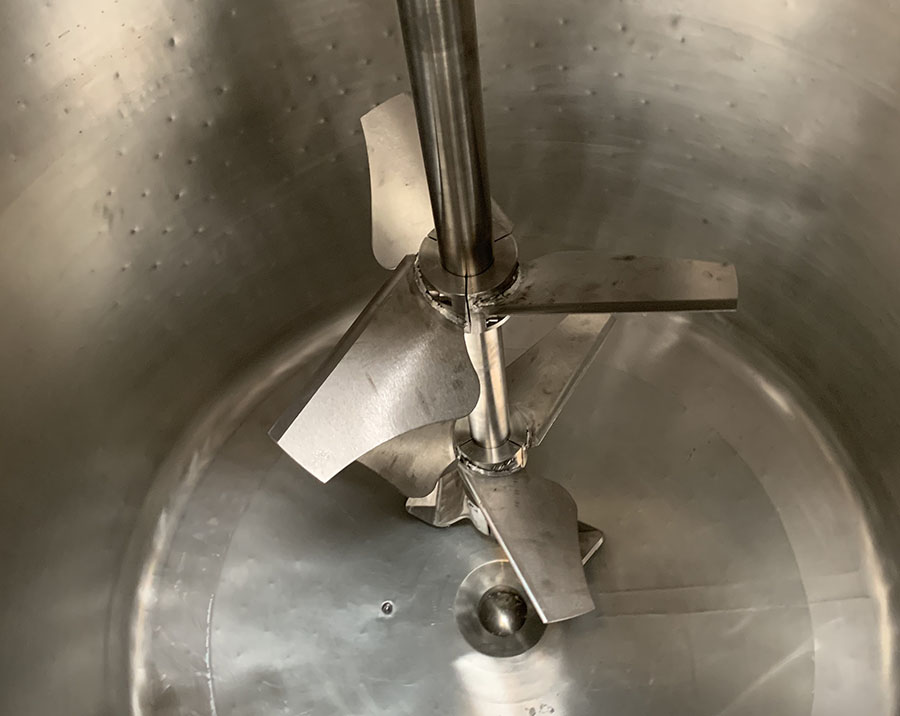
The sabre type turbine facilitates a smooth motion and axial flow in the paint finishing tank. This type of turbine is commonly used for finishing all paint types that incorporate synthetic resins, emulsions, solvents, or slurries.
In addition to achieving high product homogenisation, sabre turbines are very easy to clean.
Double-flow sabre type turbine
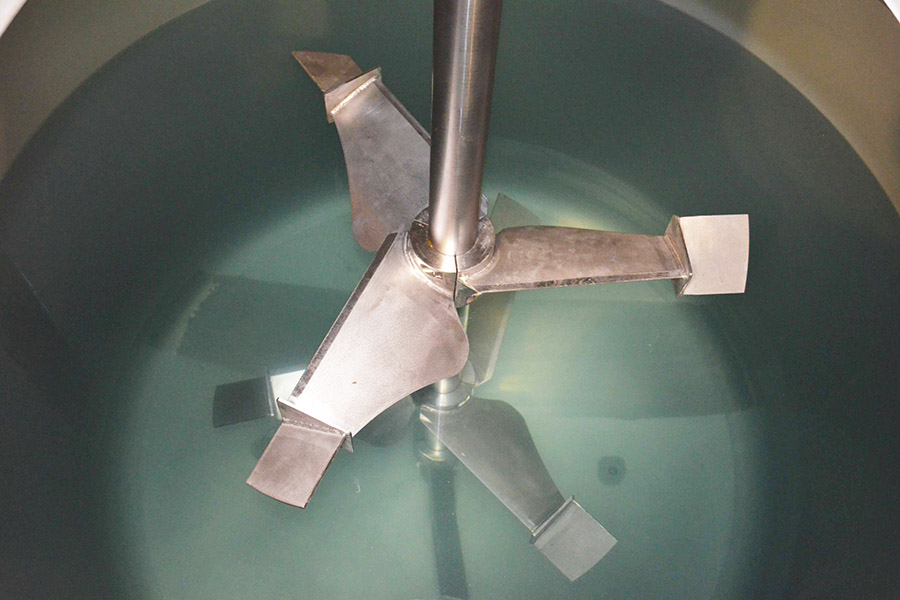
The double-flow sabre type turbine produces a smooth motion and axial flow, downward at the centre and upward at the end.
It is usually used in the finishing stage of medium viscosity paints that incorporate synthetic resins, emulsions, solvents, or slurries.
Like the sabre type turbine, it facilitates high product homogenisation and is easy to clean.
IBC folding arm sabre turbine
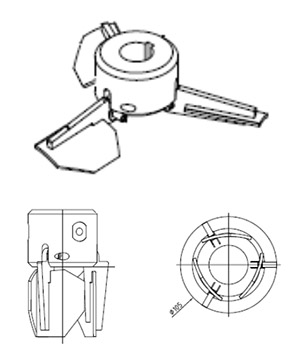
The IBC folding arm sabre turbine produces a smooth motion and axial flow suitable for homogenising medium and low viscosity paints. It is also used for finishing low viscosity paints that incorporate synthetic resins, emulsions, and solvents.
However, it is relatively difficult to clean the IBC folding arm sabre turbine.
Inclined-blade turbine
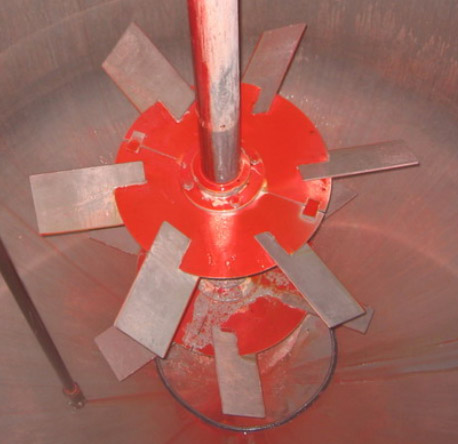
The inclined-blade turbine is suitable for finishing medium viscosity paints that incorporate synthetic resins, solvents, or slurries. It provides a smooth flow and axial movement facilitating high product homogenisation and easy cleaning.
Anchor or mini-anchor turbines

Anchor and mini-anchor turbines are used in the finishing of medium viscosity paints that incorporate synthetic resins, solvents, or slurries. They are suitable for the manufacture of products that settle.
This type of turbine produces smooth motion and tangential and axial extraction flows.
They also achieve high homogenisation, although they are not so easy to clean.
ther types of paint finishing turbines
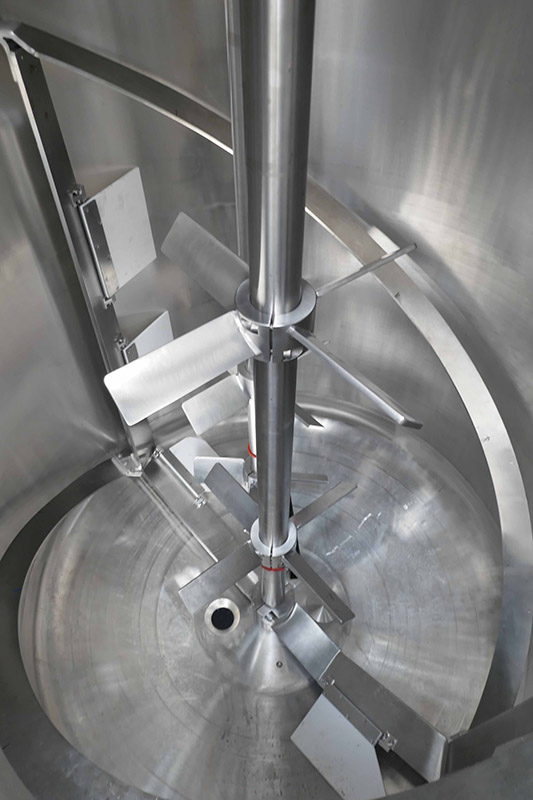
There are other types of turbines that Oliver + Batlle also provides for the finishing of medium or high viscosity paints. These turbines produce varied flows depending on their geometry and the characteristics of the product for which they are used.
They are recommended for single product vessels, as cleaning times are longer.
At Oliver + Batlle, we provide our clients with a team of specialists who will advise them on the acquisition of disperser equipment and paint and related product finishing that best suits their production needs.
Share any doubts or experiences in the comments section and follow us on LinkedIn to keep up with our news.

